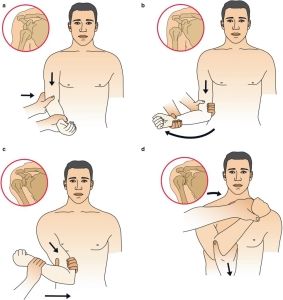Glenohumeral joint dislocations are the most commonly dislocated major joint in the body.
Predisposed by a lack of intrinsic bony stability (the joint is very shallow) together with a wide range of motion. Anterior dislocations by far the most common type. Mechanism might help predict the type of dislocation – see below.
Find out about any numbness, tingling, weakness or history of prior dislocations. Identify associated injuries: BP, axillary nerve, radial nerve or axillary artery. Incidence of axillary nerve injuries increase with age (5 – 54%).
It is very painful and optimal analgesia is indicated as soon as possible. Options include, but are not limited to:
Procedural sedation and full relaxation ensure a smooth and simple reduction. See ERC protocols:


